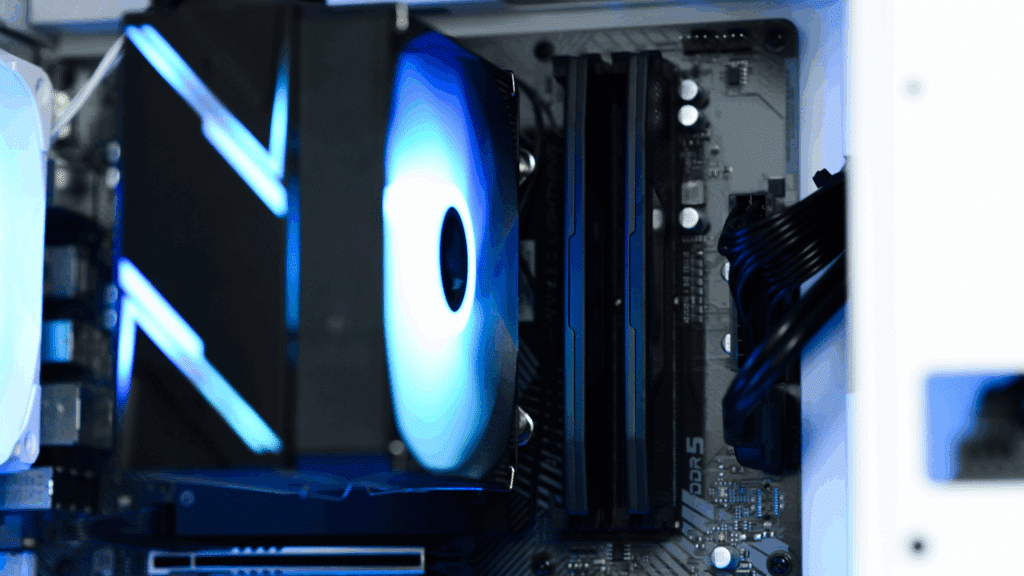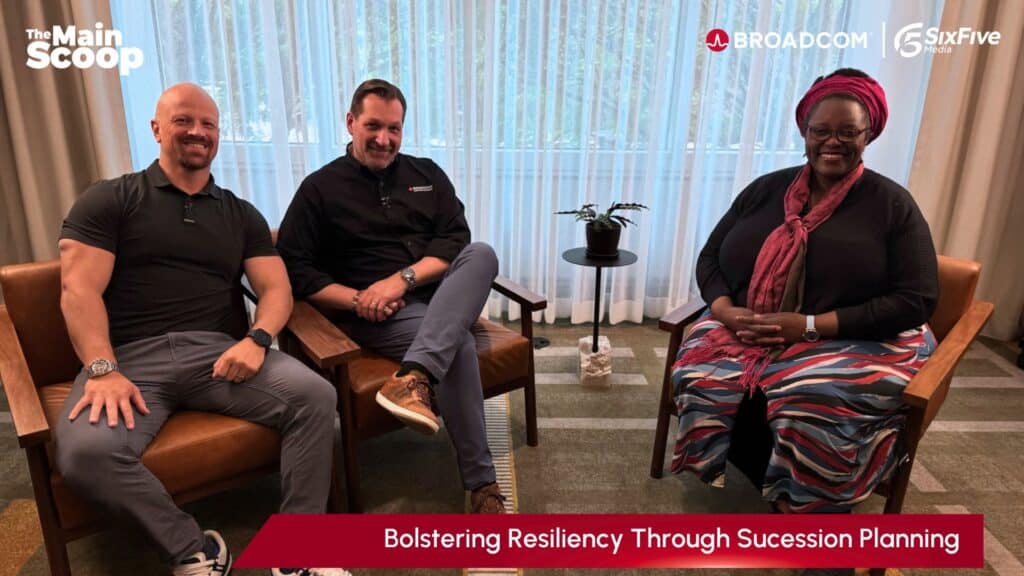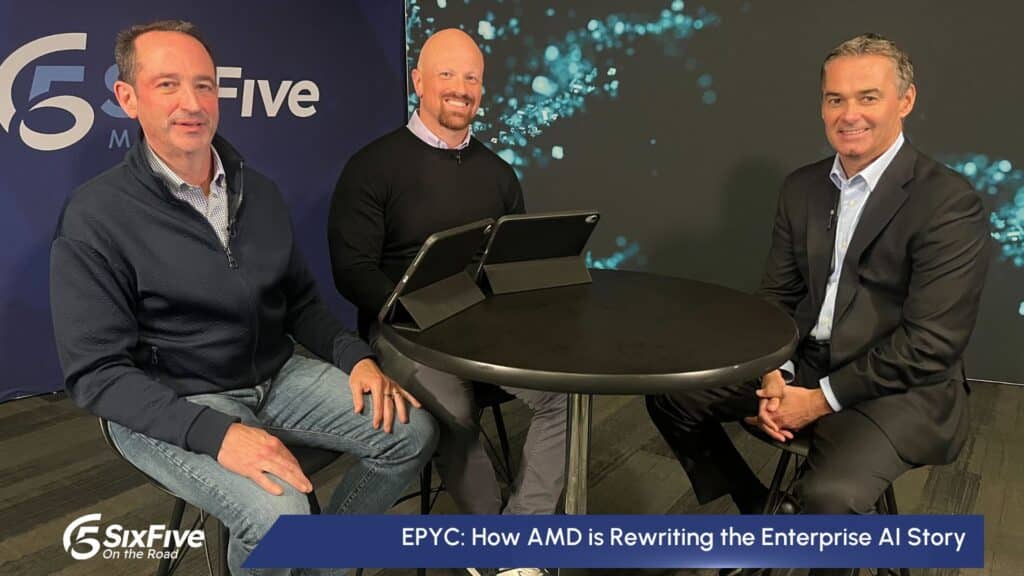The Six Five team discusses Lenovo AI Disclosures.
If you are interested in watching the full episode you can check it out here.
Disclaimer: The Six Five Webcast is for information and entertainment purposes only. Over the course of this webcast, we may talk about companies that are publicly traded and we may even reference that fact and their equity share price, but please do not take anything that we say as a recommendation about what you should do with your investment dollars. We are not investment advisors and we ask that you do not treat us as such.
Transcript:
Pat Moorhead: So far we saw IBM, we saw Dell, we know we’re going to hear more from HPE about AI next week, but Lenovo wants to make sure that everybody knows what they’re up to and what they’re doing in AI. And you might guess given the market share increases of Lenovo’s infrastructure group and their capabilities at the Edge, that they would be doing some serious business in AI. And the good news is they are. So in a release and discussion that we had with Kirk Skaugen and team, Lenovo says that they have revenue to over $2 billion with AI.
And by the way, I really appreciate putting a number on it because it’s so frustrating. Companies that want to be known for AI, they might very well be known for AI and then don’t put any detail around the monetary impact. So Lenovo took their shot here. They also said that they’re going to make another $1 billion investment over three years to accelerate the deployment. And that’s driven by research centers of excellence and other technology investments. But here’s where I want to auger in. They said we have the most comprehensive AI portfolio and as analysts we always need to watch those types of statements. Well, I burrowed in a little bit to that statement and Lenovo sent me some proof points and essentially their measurement of being the most comprehensive is looking at think system servers, think Edge, think Station and think Agile Edge.
The amount of platforms that they have compared to HPE and Dell and I think IBM, and based on Lenovo, the way that they are measuring it, Lenovo does in fact have the most comprehensive AI platform portfolio. So thanks to Lenovo on bringing that out and surfacing that. Thanks for having the courage to actually have a number. We appreciate that and I’m going to look forward to following all the things in AI that you are going to do. I’m particularly interested in how you’re looking at models. What are some proprietary generative AI models that the company can tee up, who the company’s aligning with Companies like Hugging Face as an example, to get a better picture of what the company is doing in the future. But we know that what they’re doing today is making a difference and they put a number on it, $.2 billion
Daniel Newman: Yeah, Pat. Listen, the opportunity around AI has implications for every company, whether you’re a picks and shovels memory and networking and DPU or your applications, but somewhere in the middle the real hardware providers are getting a little bit lost in the shovel. And this is brought, whether it’s been Dell or HPE and now Lenovo, to really need to double down on making sure that their story resonates and lands. And whether we talked to Kirk Skaugen or Flynn Maloy and as they’ve been rolling this out to us, what I’ve really been impressed by is the commitment to the full stack. And instead of seeing yourself as the middle person in this overall opportunity, they’re seeing themselves as the one that does a lot of the customer interfacing. They are the provider of whether that’s the PC and the laptop or the core infrastructure, the GPUs.
I mean, people are buying their compute. They’re not actually going and buying it in most cases from the chip provider. They’re buying AMD from a Lenovo, from some sort of partner. The real way a customer gets their equipment comes through multi source, there’s something called a channel. And the channel is really, really important. Now, the massive investment, the multi-billion dollar investment is worth noting. I thought what they call the innovators program, that was also really, really a valuable thing starting to turnkey these Pat, because you know how I was going on and lamenting about the Google Gen AI app builder, it’s the same thing with infrastructures. How do I spin up that right hardware?
And the thing is not everything is going to be done in the hyperscale public cloud, but what if it is, Lenovo provides a lot of hardware to them as well. So Lenovo has the hedge going on there.
Pat Moorhead: Yes.
Daniel Newman: And so they’re partnering with the Edge, they’re partnering with ISVs, they’re investing hundreds of millions of dollars. They’re building software plus hardware solutions. They’re doing a lot of things right. And Pat, this has been reflected and don’t get confused about Lenovo’s, somewhat soft end of year numbers. That was all in the PC business.
Pat Moorhead: That’s right.
Daniel Newman: The ISG business and the servicing business has been really robust.
Pat Moorhead: 50% growth.
Daniel Newman: And I think that they need to get adequate credit for that. So this moment is really more about establishing that there’s a really critical role for companies like Lenovo that are the plumbing, in many ways, of all the requirements to deliver AI at scale. And it was a really positive announcement for the company. So it wasn’t like a, “Hey, we rolled out this new thing.” It was like a, “Hey, we have a story.” And as I alluded to a Salesforce Pat, I’ll allude to here, not a new story. This didn’t start with generative AI. They’ve been doing this for a while now. And so I think it’s appropriate that they raise their hands and say, “We’d like to get credit.”
Pat Moorhead: Good stuff, Dan. And I’ll add that unlike all the other OEMs, Lenovo has a hyperscaler business. So anytime you see the hyperscalers, there could be a chance that Lenovo was part of that.
Author Information
Daniel is the CEO of The Futurum Group. Living his life at the intersection of people and technology, Daniel works with the world’s largest technology brands exploring Digital Transformation and how it is influencing the enterprise.
From the leading edge of AI to global technology policy, Daniel makes the connections between business, people and tech that are required for companies to benefit most from their technology investments. Daniel is a top 5 globally ranked industry analyst and his ideas are regularly cited or shared in television appearances by CNBC, Bloomberg, Wall Street Journal and hundreds of other sites around the world.
A 7x Best-Selling Author including his most recent book “Human/Machine.” Daniel is also a Forbes and MarketWatch (Dow Jones) contributor.
An MBA and Former Graduate Adjunct Faculty, Daniel is an Austin Texas transplant after 40 years in Chicago. His speaking takes him around the world each year as he shares his vision of the role technology will play in our future.





